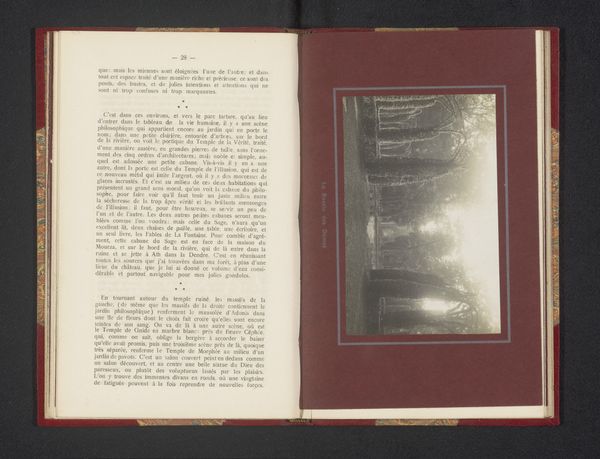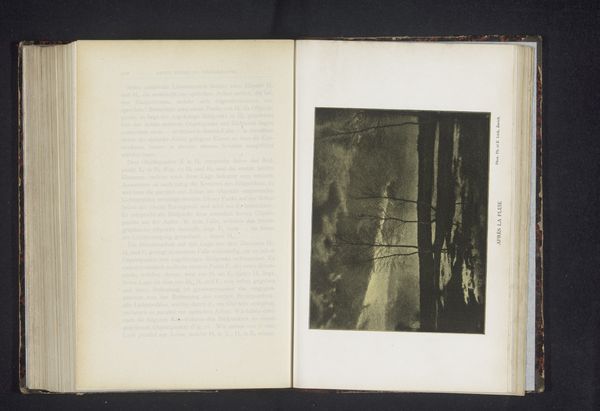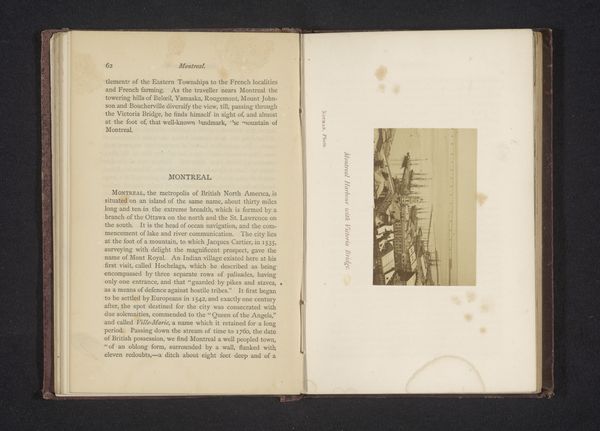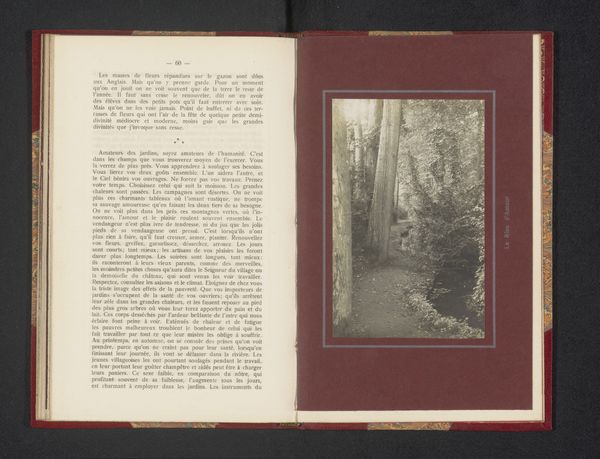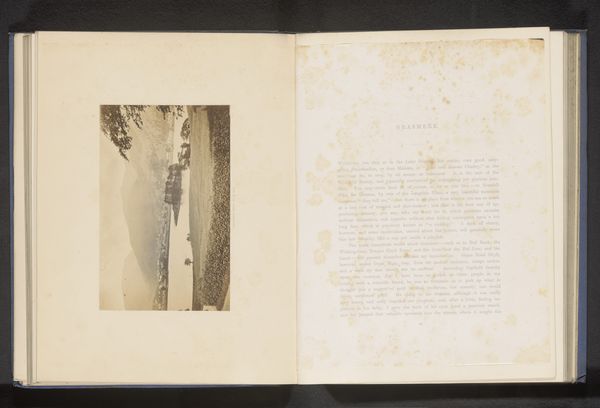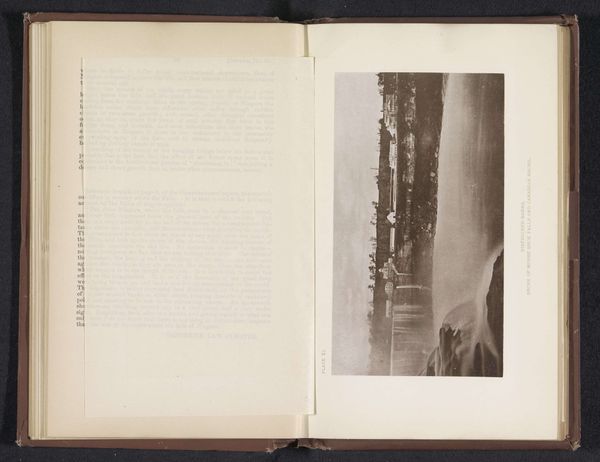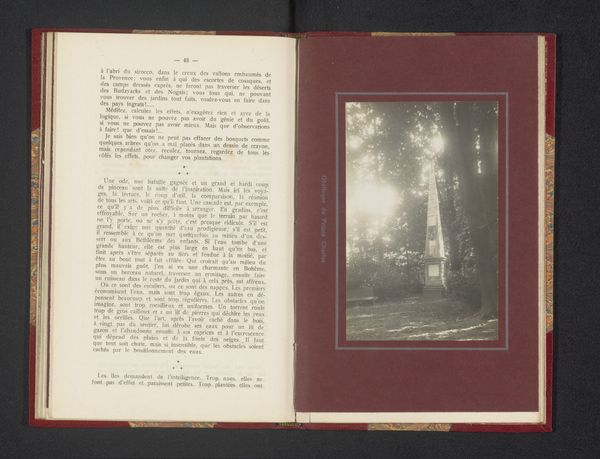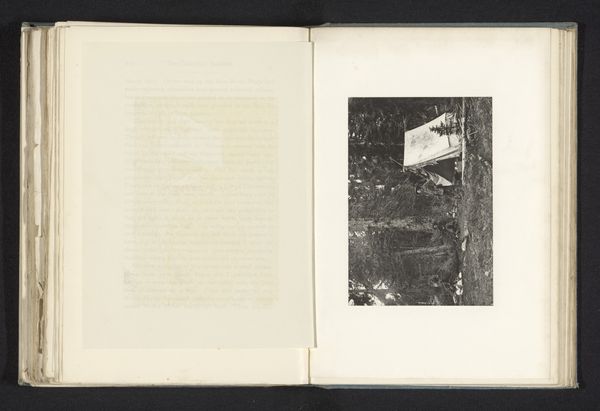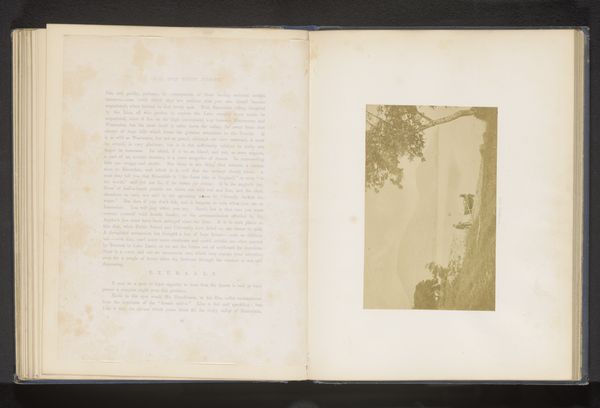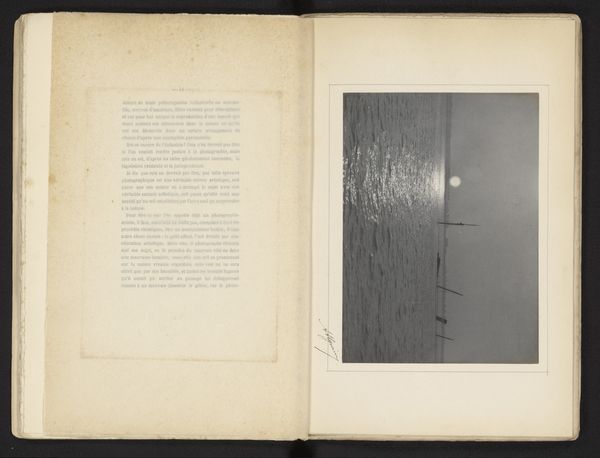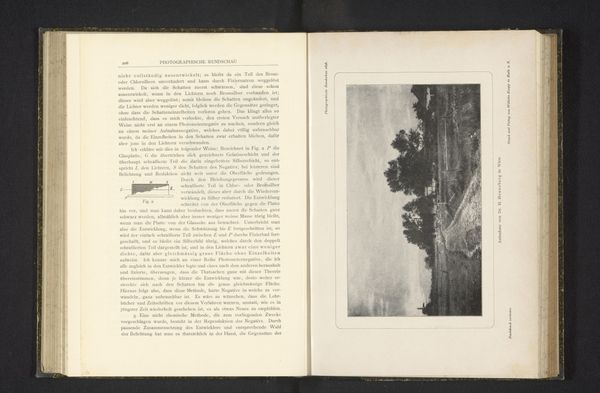
print, photography
#
garden
# print
#
french
#
landscape
#
photography
Dimensions: height 80 mm, width 126 mm
Copyright: Rijks Museum: Open Domain
Editor: So, this is “Gezicht op de tuin van het Château de Beloeil,” dating back to before 1908, a photographic print by Coppin-Goisse. The muted tones give it such a dreamlike quality, almost like looking into another world. How do you interpret this work, with its stark blacks and ethereal whites? Curator: The photograph’s power lies precisely in its manipulation of light and shadow to create this almost uncanny depth. The composition leads our eye from the solid architectural form of what seems to be a balustrade into a blurred abyss of trees. The garden seems to both welcome us and conceal secrets. Do you see the contrast between structure and chaos? Editor: I do, the architecture is very controlled while the landscape dissolves. Is that perhaps meant to tell a story? Curator: The print plays with the tension inherent in landscape photography, doesn’t it? On one hand, it documents a real place—a garden at the Château de Beloeil. On the other, the focus isn’t sharp, so we don't see the pure mimetic quality. Rather, the photographic image manipulates our experience, transforming reality into an atmospheric and, dare I say, slightly disquieting image. Consider how our subjective perceptions of space are manipulated through tonal gradations and blurry edges. Editor: So, it’s more about the feeling evoked rather than pure representation. That’s interesting. Curator: Precisely. The formal elements—the composition, light, and tonal range—invite us to consider the garden not just as a physical place but as a site of visual experience. It prompts reflection on how our perception shapes reality. Editor: I will never look at landscape photography the same way again, paying more attention to how its different qualities make you feel! Curator: And that's how a deeper understanding can blossom. Thank you for these observations.
Comments
No comments
Be the first to comment and join the conversation on the ultimate creative platform.
